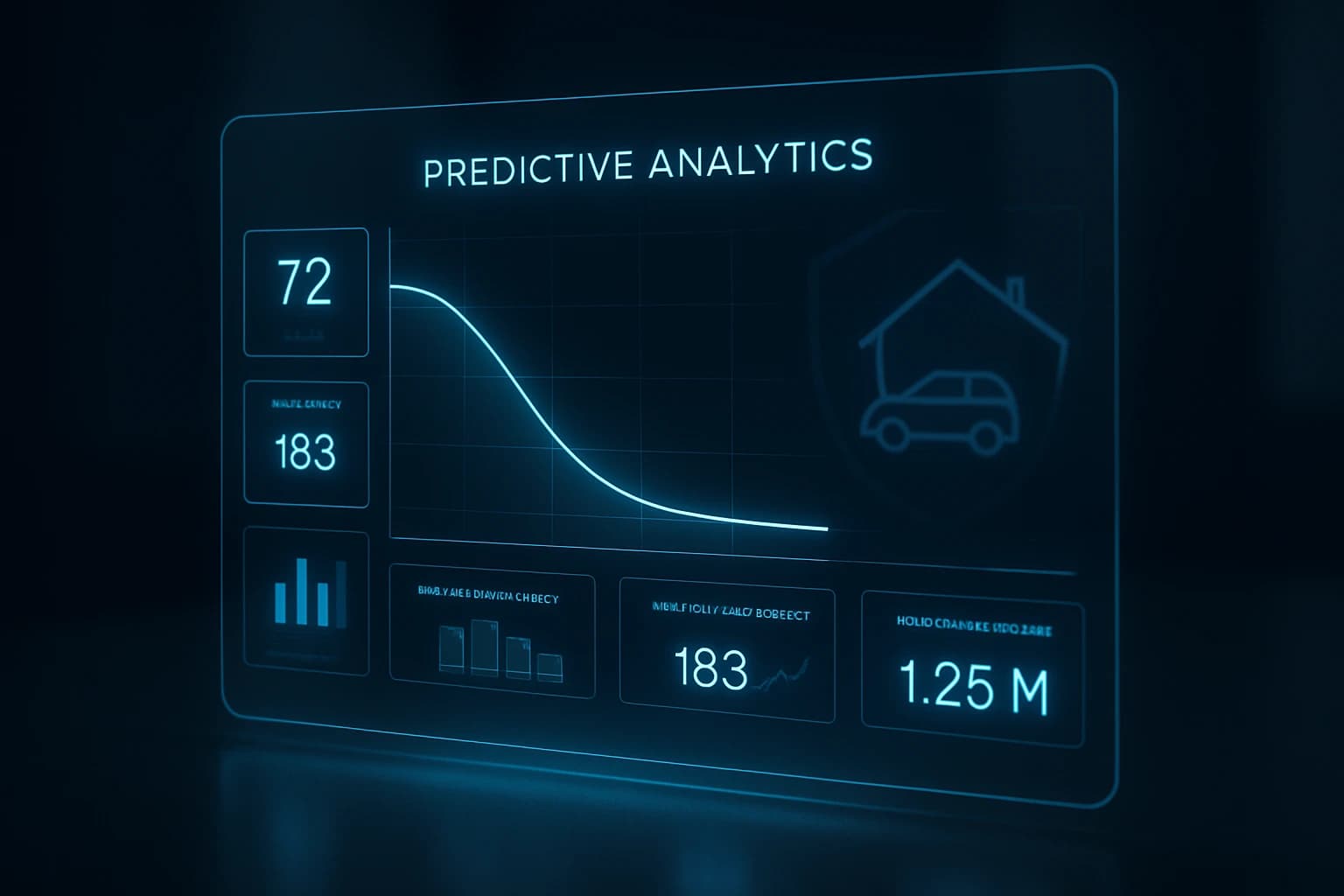The best way to turn your audiences into loyal and valued customers is by approaching them at the right time, at the right place, with the right and relevant message.
Still, many marketing-led businesses lack access to comprehensive data to support this fundamental concept in determining when and how to engage with customer touch points.
In the absence of this data, marketers are susceptible to losing potential opportunities within their target audience, allowing audiences to be captured by the competition.
To help companies increase their conversion opportunities, Express Analytics integrates multi-touch attribution analytics with marketing mix modeling into a 360-degree approach that identifies individual customers, targeted programs, and relevant micro-segments. When initiated, these insights can help companies reach their revenue goals.
What is Customer Segmentation Analytics?
Customer segmentation analytics is the process of dividing audience groups within an analytics platform to produce more detailed audience data.
A prime example would be grouping audiences by country, where you have distinct subsets, such as visitors from the US, UK, Canada, and India.
Another instance would be grouping by device, where you have multiple customer subsets, such as visitors who browse your website on a tablet, smartphone, and desktop.
The intention behind customer segmentation is to create actionable data to fully understand your audience, enabling you to continually refine your website, marketing campaigns, customer service, and mobile apps.
Apply Customer Segmentation to Acquire Profitable Customers? >>>> Let's Connect
Why Use Customer Segmentation and Advanced Modeling?
Uniform communication methods that fail to consider customer needs have not been effective in leveraging opportunities worth millions of dollars at the segment and individual levels.
To stay active in a competitive market, businesses continually strive to develop unified strategies that incorporate marketing mix models, value-based segmentation, and attribution platforms.
With this type of strategy, businesses can measure, capture, and extract value from opportunities that were previously missed.
Most brands rely on predictive analytics and data management platforms to provide clients with a unified set of brand drivers.
To address media and local activities, almost all brands focus on elements such as comprehensive and broad-reaching media strategies.
Engaging Your Highest Profitable Customers and Segments
By merging customer segment-level data into marketing mix models, marketers can identify the most effective messages, promotions, and media channels at the right time and for the target customers.
They can depend on a marketing mix modeling platform to do this.
It has the potential to quickly generate thousands of business- and client-oriented models that capture both the indirect and direct impacts of marketing investments, utilizing customer segment-level and customer data.
By setting up connections within the buyer's journey for every specific target customer, businesses can make informed decisions and execute deliverables perfectly, resulting in millions of dollars in incremental value.
Customer Segmentation Analytics Uses in Business
Advanced analytics techniques, in combination with advanced AI, can play a significant role in segmentation.
Various customer segmentation analytics tools produce valuable insights that businesses use to target specific groups with tailored messages, including advertising and marketing strategies, and relevant appeals.
According to Rod Fontecilla, who was the chief innovation officer and partner at the consultancy Guidehouse until March 2024, "this capability to perform customer segmentation lets you choose where you would like to invest the money."
Marketing professionals are more familiar with customer segmentation analysis, but social, charitable, and political organizations, as well as product developers, also use segmentation.
The familiar method k-means clustering makes use of ML algorithms to separate observations into clusters. Data analysts define the number of segments or clusters used in the classification.
According to Khater, "it's simply a process of segmenting customers of similar attributes," and considering the algorithm doesn't inspect the reasons a company wishes to establish clusters.
Khater says that analysts use another technique called look-alike modeling, where ML algorithms can discover and classify users according to the demographics of a well-known group, like a business's current users.
Businesses utilize customer segmentation optimization techniques to identify potential customers and niche audiences that resemble their existing customers.
Although algorithms differ in their segmentation strategies, experts agree that segmentation models are probabilistic rather than deterministic.
The clusters in segmentation analysis are classified according to the level of similarity between two or more sets of data rather than exact matches.
Segmentation Vs. Personalization: Which is Better?
For proper personalization, marketers require segmentation. Customer segmentation analytics is a critical tool to address specific pain points and achieve a higher ROI.
According to Fontecialla, the majority of the companies don't have the data atmosphere needed for full personalization, nor would they like to spend on the necessary computer power.
Segmentation can scale in a better way than personalization, and segmentation produces better results that provide ROI to companies if it is enabled by intelligence and combined with sets of quality data.
If users share demographic data, they may lose interest in the same services or products.
Suppose companies and marketers thoroughly understand the concepts of personalization and segmentation, as well as the differences between them. In that case, they can deliver customized experiences to their ideal customers through these strategies.
According to Gary Kotoverts, Chief Data and Analytics Officer, Dun & Bradstreet depends on segmentation to support marketing, sales, and other activities.
With the use of the analysis, teams can craft messaging and campaigns with a suitable degree of personalization for the targeted audience.
Marketers often make a significant mistake by viewing personalization and segmentation as competing marketing approaches.
For instance, it is common for marketers to think that personalization encompasses thorough practices that overcome the broader strokes of segmentation.
Segmentation informs marketers whether they have to target customers in the initial phase. Hence, it should appear first before personalization.
Win new customers with customer journey mapping? >>>> Let's Connect
When to Use Segmentation in Business?
In the early phases of a campaign, marketers should implement a segmentation strategy.
Once marketing teams gather more data and form a story for their segments, they can develop a personalized content campaign.
When to Use Personalization in Business?
The customer's intention is not always the same and changes each time they come into contact with the brand. Their intent will not be constant throughout a single interaction.
Hence, along with segmentation, marketers must also understand what customers need.
Marketers need to implement rules-based logic to consider various data points when identifying customer intent.
Personalization should occur every time people engage with a brand, regardless of the content or platform.
So, segmentation or personalization: which is better? It's not a simple question to answer.
These two strategies are more effective in hybrid and digital retail environments because marketers can connect with customers on a deeper level.
Segmentation enables marketers to produce content for specific groups of audiences, whereas personalization involves looking deeper into every individual within a segment independently.
Furthermore, businesses have a responsibility to maintain a balance between these two strategies to optimize their email strategy.
How to Use Customer Segmentation Analytics to Create Value?
Customer segmentation analytics offer little to no value if a business does not take appropriate actions after identifying segments based on its business goals.
According to Khater, "segmentation analysis can be done by understanding the objective of a business."
Khater added that a business can utilize the outcome of its segmentation analysis to find customers who might not want to stay and reach them with promotional messages to retain them, thereby lowering churn.
Companies can use analysis outcomes to enhance customer retention or acquire new prospects.
Evolution of Segmentation with GenAI, Advanced Analytics, and AI
GenAI, AI, and advanced analytics can add more value to customer segmentation.
For instance, automation and intelligent tools are enhancing data collection from client feedback mechanisms, customer surveys, and the analysis of demographic data, as well as buying trends.
According to Fontecilla, AI can produce more granular and accurate groups. Present AI systems have more capability to find the latest trends among customers.
Conclusion
Segmentation is not rocket science. Therefore, companies undergo the process of segmentation to thrive in today's competitive environment. The majority of the companies have decided to consolidate enough data to monitor sales, marketing, and client relationship metrics.
Through advanced analytics techniques merged with segmentation, businesses can determine underserved markets and convert them into brand loyalists.
Ready to transform your customer segmentation with GenAI and ML? Schedule a free consultation with our experts to discover how we can help you implement advanced customer segmentation analytics solutions for enhanced targeting, improved ROI, and competitive advantage.


